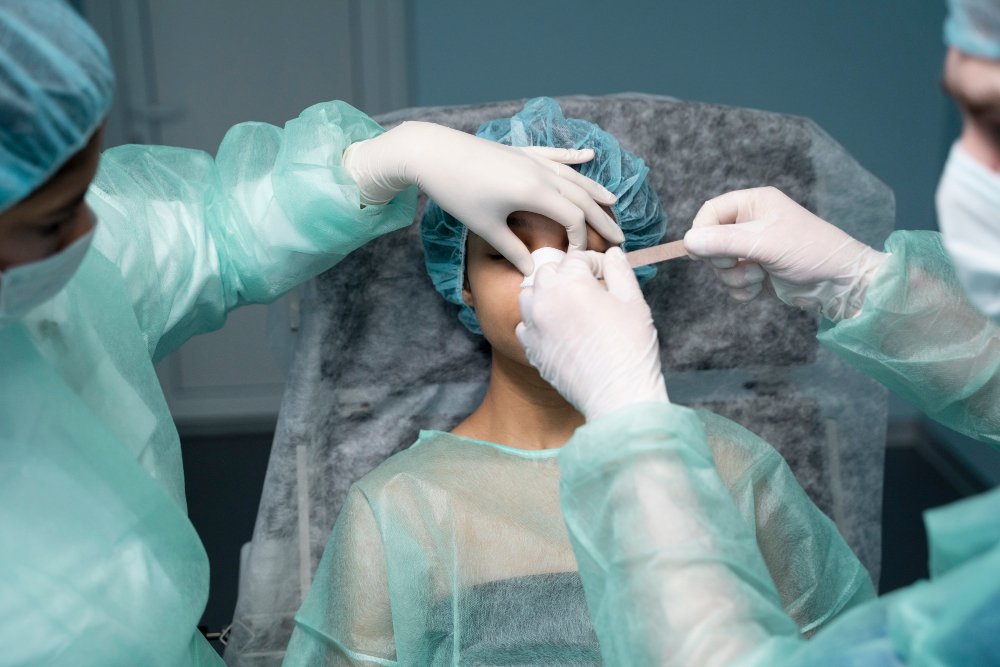Treatment Overview
Temporal Hollow Correction with Fat Transfer is a minimally invasive procedure that restores volume and smooths sunken areas in the temples using the patient’s own fat. Fat is typically harvested from areas like the abdomen, thighs, or flanks, purified, and precisely injected into the temporal hollows to achieve a balanced and youthful appearance.
In Korea, surgeons employ advanced microfat and nanofat injection techniques to ensure smooth, natural results, minimizing lumps or irregularities while also improving skin quality due to the regenerative properties of fat-derived stem cells.
Purpose & Benefits
- Restores volume to hollow temples and softens facial contours
- Reduces the appearance of aging or gauntness in the upper face
- Improves facial symmetry and balance
- Natural, biocompatible fat reduces risk of allergic reactions
- Enhances skin texture and elasticity due to regenerative fat cells
- Long-lasting results compared to dermal fillers
- Can be combined with other facial rejuvenation procedures for overall harmony
Ideal Candidates
- Individuals with sunken or hollow temples
- Patients seeking a natural alternative to synthetic fillers or implants
- Adults in good health with adequate donor fat
- Those looking for subtle but effective facial rejuvenation
- People willing to undergo minor downtime for long-lasting results
Possible Risks & Complications
- Temporary swelling, bruising, or tenderness in donor and injection sites
- Partial fat resorption over time (some volume loss is normal)
- Minor asymmetry that may require touch-up
- Rare risk of infection, lumps, or oil cyst formation
- Overcorrection if excessive fat is injected
Techniques Used
- Microfat Injection – Restores volume and contours the temples naturally
- Nanofat Injection – Improves skin quality, elasticity, and reduces fine wrinkles
- Layered Microdroplet Technique – Ensures smooth, even distribution
- Korean Precision Approach – Uses ultra-fine cannulas for minimal trauma and higher fat survival
Recovery & Aftercare
- Swelling and bruising peak within 2–3 days, gradually improving over 1–2 weeks
- Avoid pressure or massage on temples during initial healing
- Cold compresses recommended for the first 48 hours to reduce swelling
- Limit strenuous activity and heat exposure for one week
- Maintain stable body weight to preserve fat graft results
Results & Longevity
- Immediate improvement in temple volume and contour
- Final results visible after swelling subsides (3–6 weeks)
- Fat survival typically ranges between 50–70%, providing long-lasting results
- Touch-up sessions may be performed for optimal symmetry and volume retention
Treatment Process in Korea
Step-by-Step:
- Consultation & Facial Analysis – Assessment and 3D imaging to design ideal temple contours
- Fat Harvesting – Gentle liposuction from abdomen, thighs, or flanks
- Fat Purification – Centrifugation and filtration to isolate healthy fat cells
- Precision Injection – Micro-droplet layered placement into temporal hollows
- Follow-Up Care – Monitoring of healing, symmetry, and fat survival
Why Korea?
- Surgeons have extensive expertise in subtle upper-face rejuvenation
- Advanced fat purification and micro-injection techniques maximize fat survival
- Focus on natural, proportional, and harmonious results
- Competitive pricing with world-class safety standards and modern facilities
Cost Range in Korea
The cost for Temporal Hollow Correction with Fat Transfer in Korea generally ranges from ₩2,000,000 – ₩4,500,000 KRW (approx. $1,500 – $3,400 USD), depending on:
- Surgeon’s experience and clinic reputation
- Amount of fat required and donor site complexity
- Combination with other facial rejuvenation procedures
- Number of sessions for optimal results
Global Price Comparison:
- USA & Europe: $3,000 – $6,000
- Japan: $2,500 – $5,000
- Korea: $1,500 – $3,400 (often includes consultation, fat harvesting, and follow-up care)
Popular Clinics in Korea
- Banobagi Plastic Surgery – Experts in upper-face fat grafting and temple contouring
- View Plastic Surgery Clinic – Specializes in microfat and nanofat techniques for temples
- ID Hospital – Known for combining temporal fat grafting with midface and lower-face rejuvenation
- JW Plastic Surgery – Focus on natural, balanced facial contour enhancement
- Regen Plastic Surgery – Uses advanced 3D planning for precise, harmonious temple shaping




